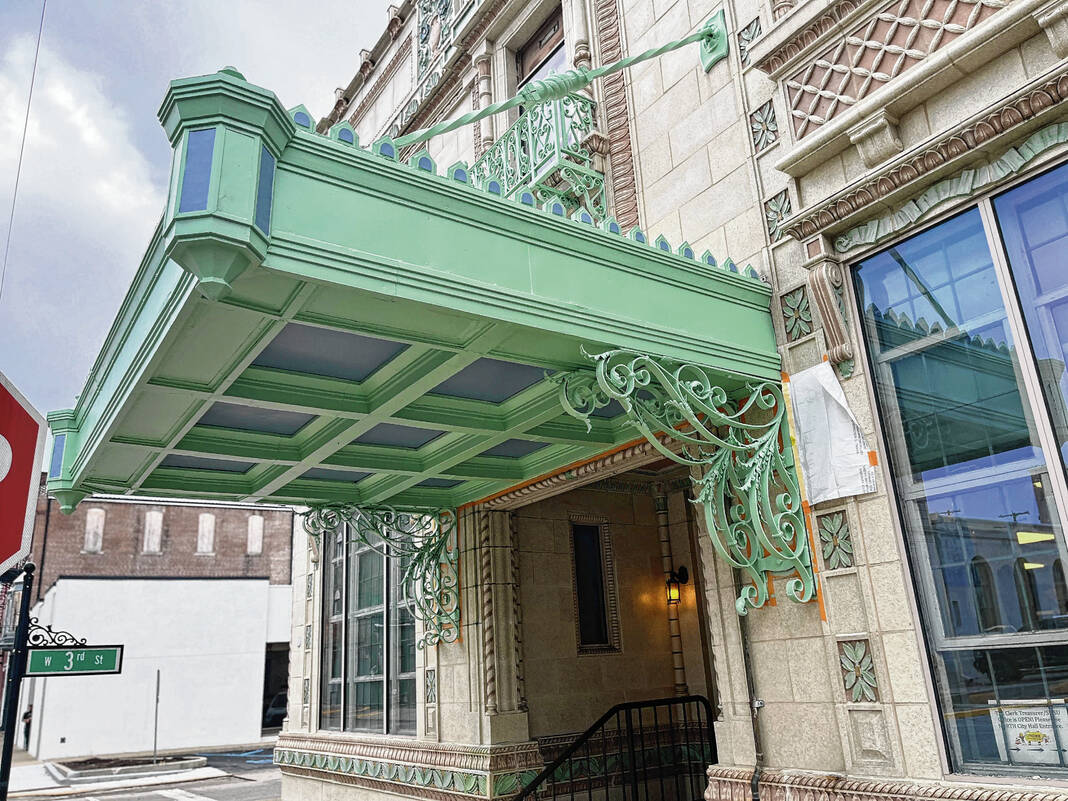
A $75,000 monthlong project to restore and maintain a portion of Seymour City Hall constructed in 1929-30 at 301-309 N. Chestnut St. is winding down. The Moorish influence building features an exterior terra cotta buff and tinted tile ornamentation.
Aubrey Woods | The Tribune
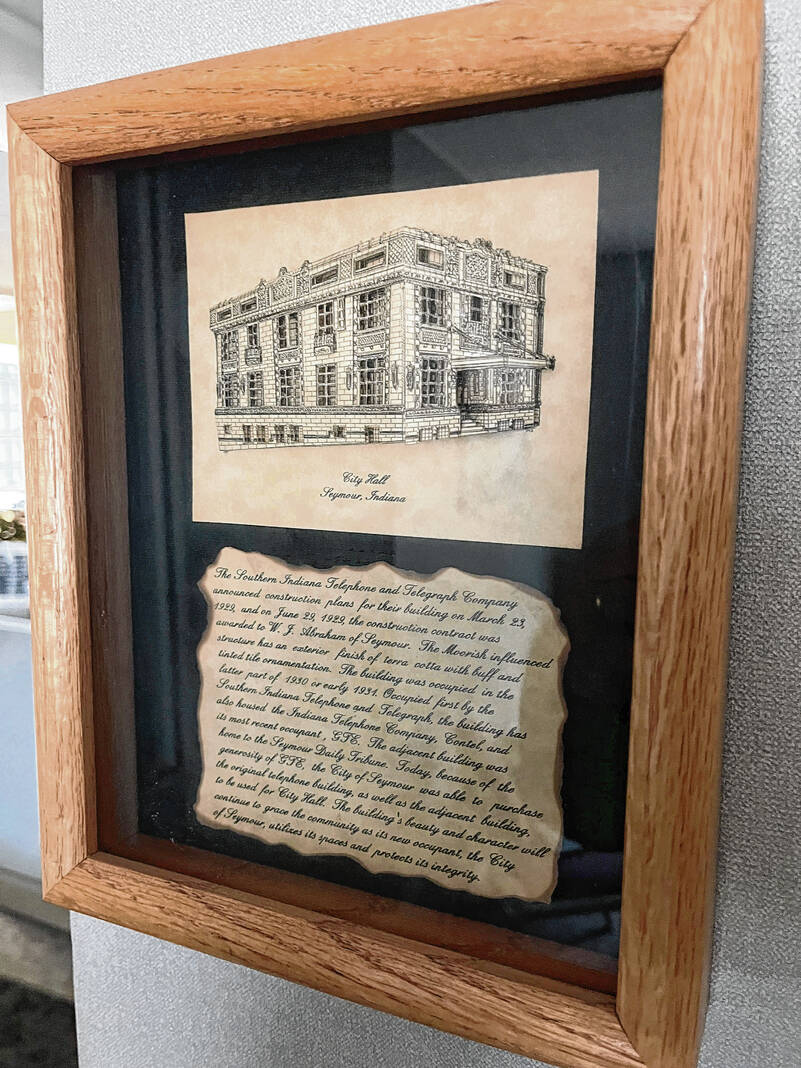
A drawing and information about the history of the terra cotta building that now houses Seymour City Hall hangs in the clerk-treasurer’s office. A $75,000 monthlong project project to restore and maintain the exterior is nearing completion.
Aubrey Woods | The Tribune
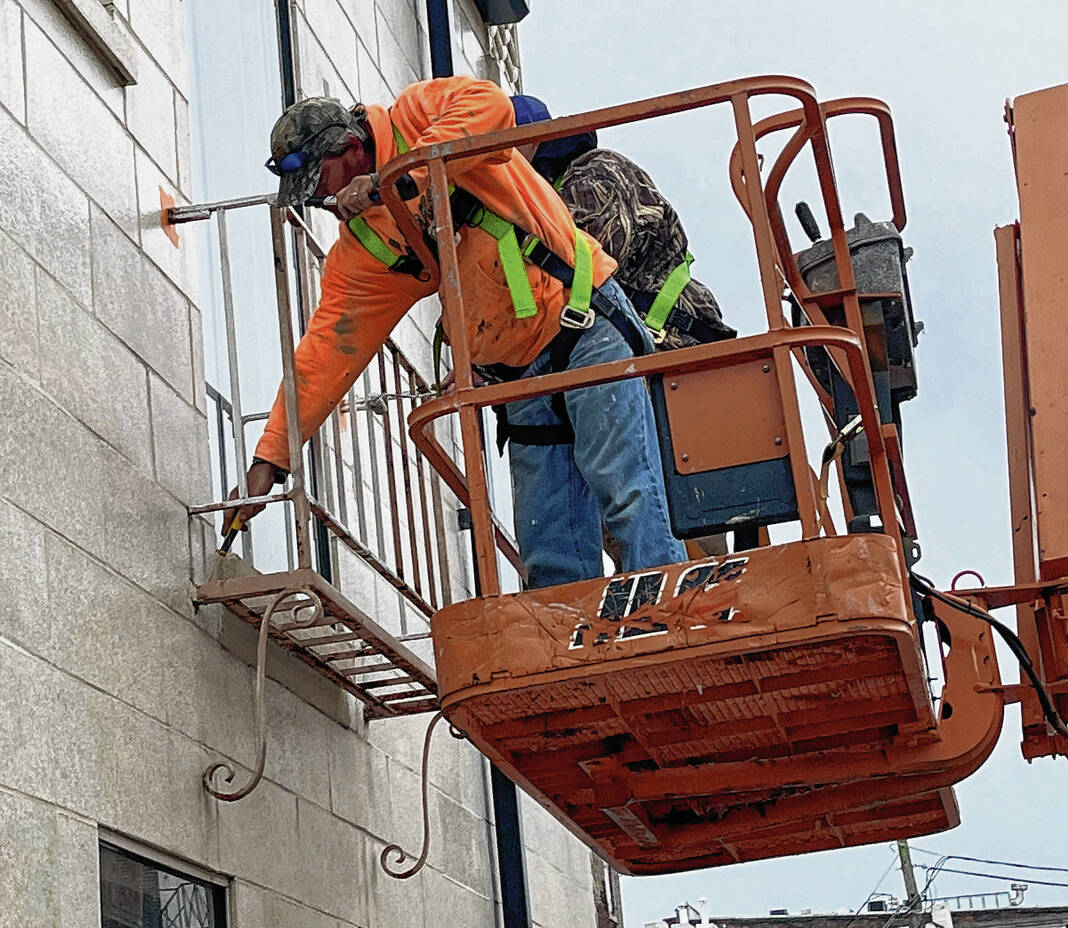
Kevin Garriott, left, of Bedford and Mike Guthrie of Mitchell have spent the past month painting the metalwork around the windows and front door of the terra cotta building that serves as the office of Seymour Clerk-Treasurer Darrin Boas. The Moorish influence building, which features an exterior terra cotta buff and tinted tile ornamentation, was built by W.J. Abraham Co. in 1929-30 at a cost of $50,000.
Aubrey Woods | The Tribune
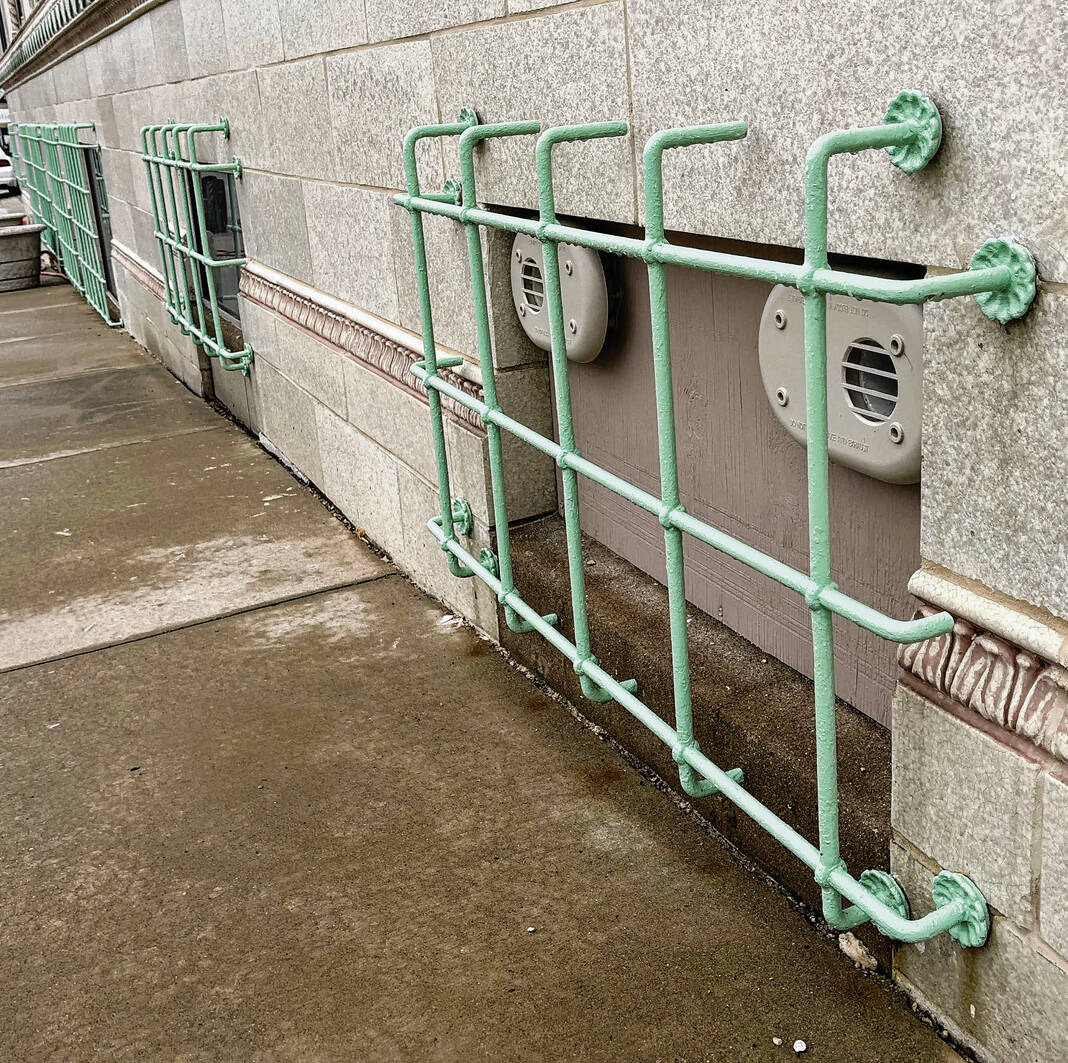
A project to restore and maintain a portion of Seymour City Hall is wrapping up.
Aubrey Woods | The Tribune
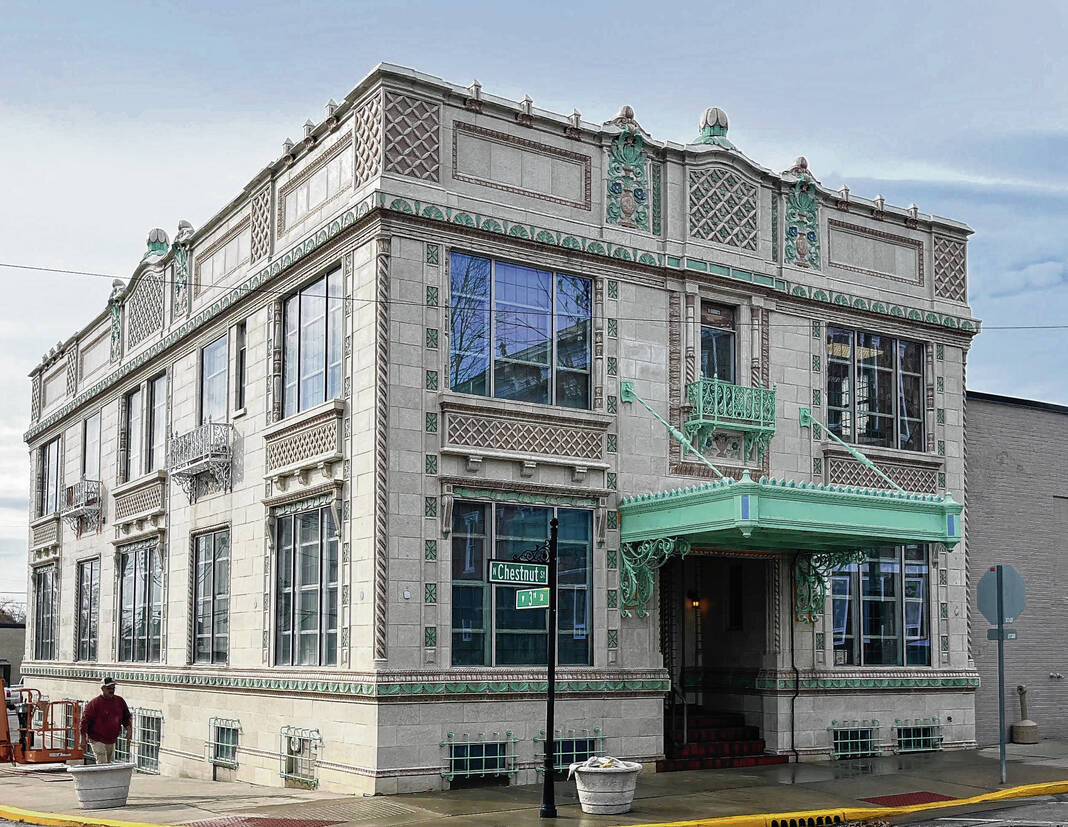
Seymour City Hall is undergoing a restoration project.
Aubrey Woods | The Tribune
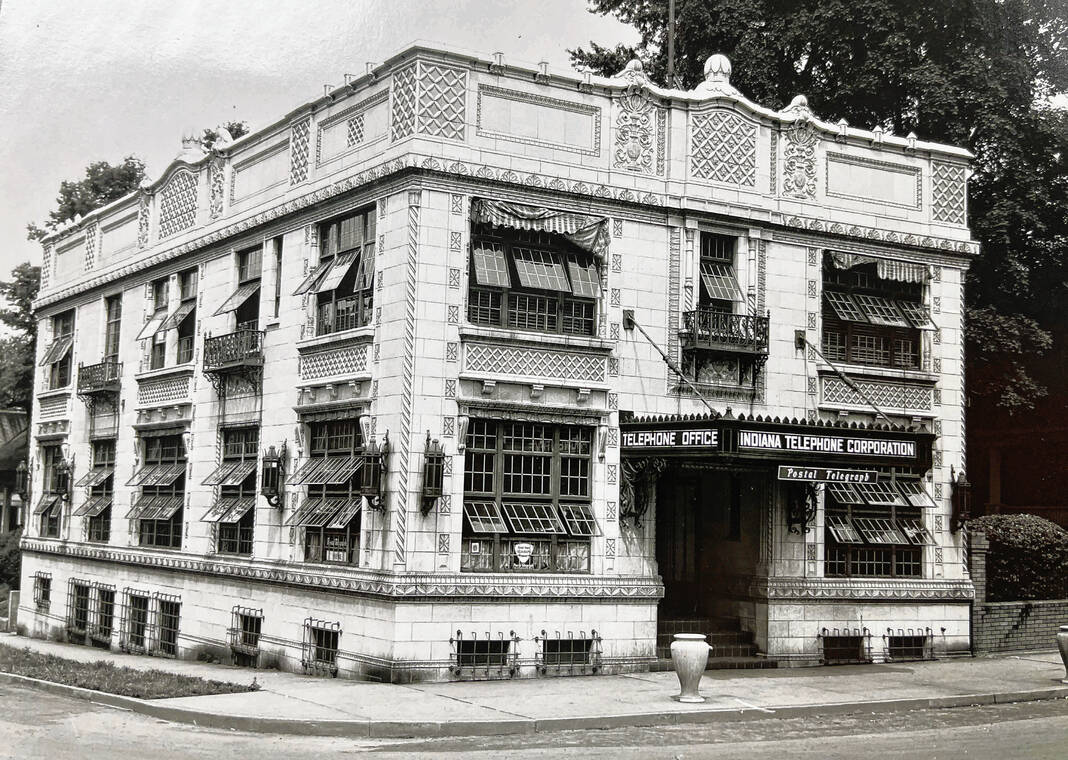
In June 1929, Southern Indiana Telephone & Telegraph Co. awarded a $50,000 contract to W.J. Abraham Co. to construct a two-story office building on the northwest corner of Chestnut and Third streets in downtown Seymour. The office opened later that year or early in 1930.
Submitted photo
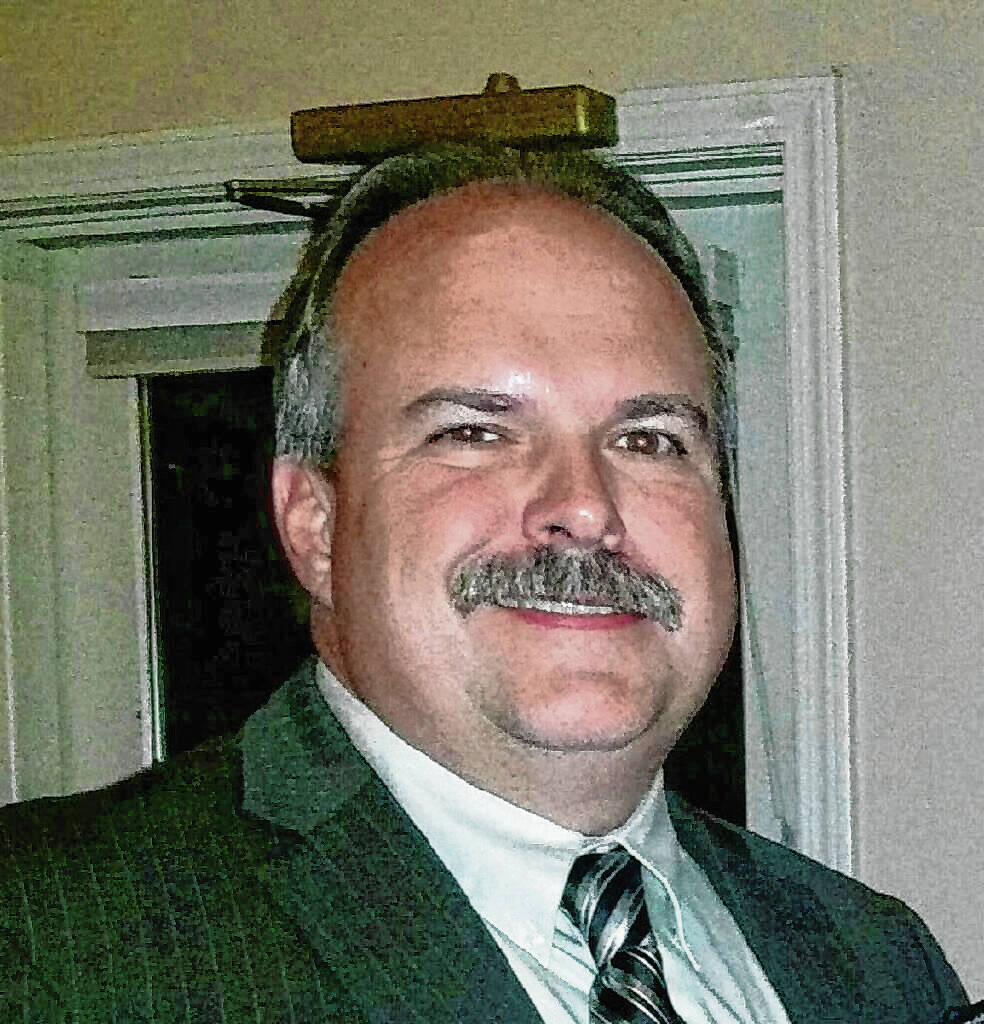
Boas
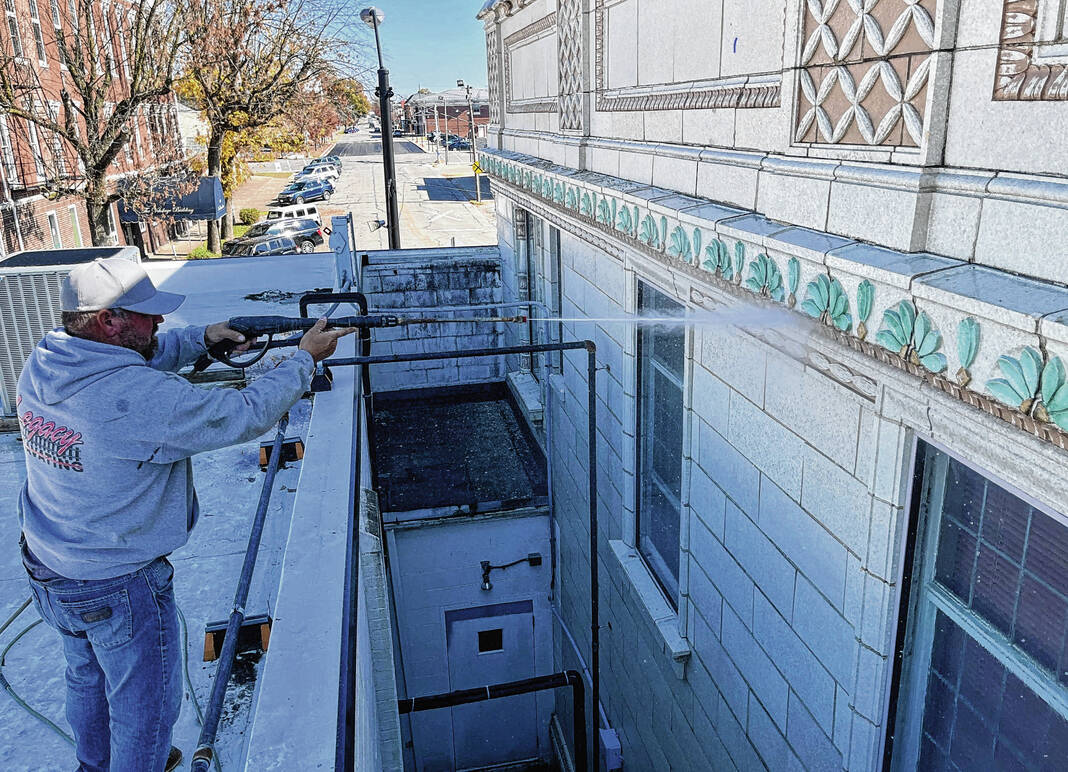
Jason Cain with Cain Construction of Bedford power washes the north side of the terra cotta building that houses the city of Seymour’s clerk-treasurer’s office Thursday afternoon.
Aubrey Woods | The Tribune
In June 1929, Southern Indiana Telephone & Telegraph Co. awarded a $50,000 contract to W.J. Abraham Co. to construct a two-story office building on the northwest corner of Chestnut and Third streets in downtown Seymour.
The company moved into the terra cotta building that features a Moorish influence later that year or in early 1930 in the midst of the Great Depression. It wasn’t long afterwards that the company entered bankruptcy, but the building would continue to serve various companies providing telephone service to the community until 1995.
That’s the year GTE Telephone sold that building and an adjacent structure that once served as the home of The Tribune to the city for $500,000. The city in turn converted the buildings into city hall with the terra cotta building serving as the clerk-treasurer’s office.
Over the past few weeks, a masonry contractor and a painting contractor have been doing some restoration and preventative maintenance work on the exterior of the building.
That work, which comes at a cost of $75,000, includes complete tuckpointing of the building and repainting all of the metal work around the windows and doors.
“I don’t think any tuckpointing has been done, but the metal has been painted several times over the years,” Seymour Clerk-Treasurer Darrin Boas said Wednesday morning.
As clerk-treasurer, Boas took ownership of the project.
“History is important to me, and I’ve done a lot of my own construction work, and I just noted issues,” he said.
Those issues included rust from the metal fixtures around the windows and front doors streaming down on the ceramic tiles.
“There were things that just needed to be done,” Boas said.
Cain Construction Co. of Bedford, the general contractor, has been doing the masonry work, which also will include sealing the building once the other work is completed. S&S Painting of Medora is doing the painting. The work started in early October shortly after Oktoberfest and should be wrapped up in the coming days.
In the next year or so, Boas said he hopes to be able to pull out the exterior windows because they need a little work.
He said the building has played a significant role in Seymour’s history, and the city has an obligation to maintain it. Jackson County Industrial Development Corp. occupies the second floor of the building.
“It’s a distinctive building for about anywhere,” Boas said.
Jason Cain said his company has completed a lot of projects on similar buildings in other cities throughout southern Indiana, including Bloomington, Bedford and Columbus.
His work involved power washing the ceramic tiles and then tackling the tuckpointing, which requires the removal of any mortar that is loose with a grinder and then replacing it with new mortar. The exterior will then be power washed again before being the sealant is applied. That sealant should last about 10 years, Cain said.
“The building is actually in pretty good shape,” Cain said. “There were just a lot of hairline cracks, but nothing major. There were a couple of cracked stones.”
There also was a lot of rust from the window and door fixtures, he said.
Kevin Garriott of Bedford, who is with S&S Painting, said people have been stopping by each day they’ve been on the project to watch them work and talk about the building.
“Everybody loves this building,” Garriott said.
Mike Guthrie, also with S&S Painting, agreed.
“They appreciate it,” he said.
The initial contract price of the building was approximately $50,000, according to an article in the June 29, 1929, edition of what was then known as the Seymour Daily Tribune. The furnishings and office equipment for the departments added materially to the cost of the structure.
Abraham placed orders at once for the various materials needed in the construction of the building, and work on the foundations started the next week. Construction was to be pushed as rapidly as possible.
The building was to be one of the largest improvements of the year and would be among the finest buildings in the city.
The structure was being erected by Telephone Realty Company, a new corporation. L.C. Griffiths, president of Southern Indiana Telephone & Telegraph Co., also was president of the realty company.
The site of the new building had recently been purchased by Mrs. H.C. Whitmer. The old two-story brick building had just been razed and the ground cleared of debris in preparation for the work on the new modern structure.
All of the business and administrative departments of the telephone company were to be moved to the new building immediately upon its completion, but the exchange would not be moved for several years. A new system of cables also was to be laid throughout the city, and these would be centralized near Chestnut and Third streets in anticipation of the time when the exchange would be moved.
